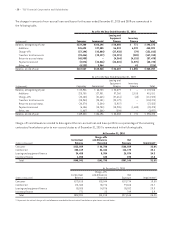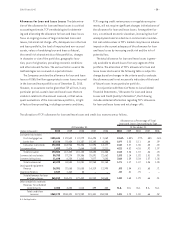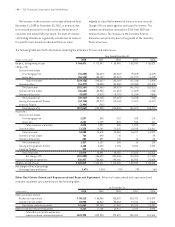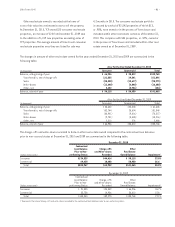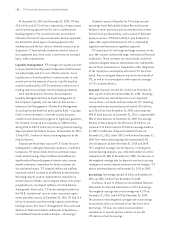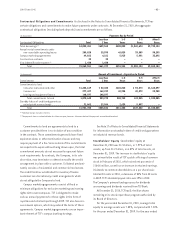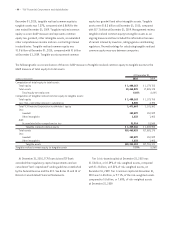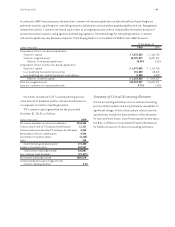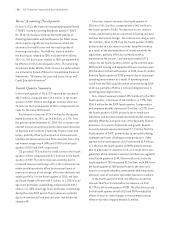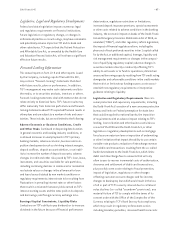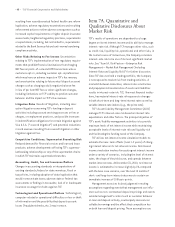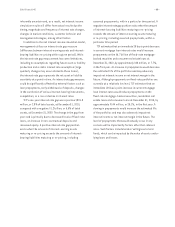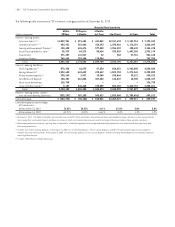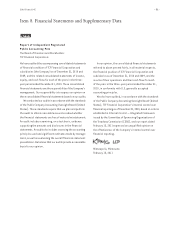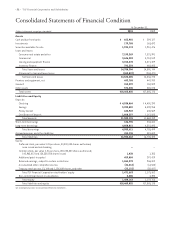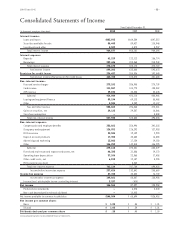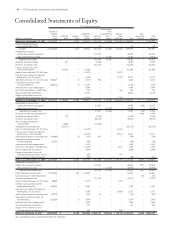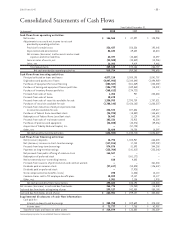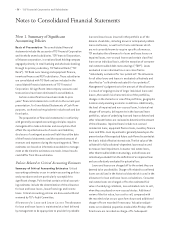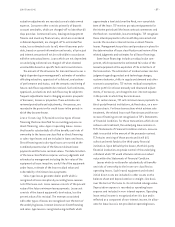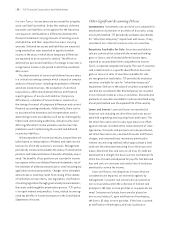TCF Bank 2010 Annual Report Download - page 64
Download and view the complete annual report
Please find page 64 of the 2010 TCF Bank annual report below. You can navigate through the pages in the report by either clicking on the pages listed below, or by using the keyword search tool below to find specific information within the annual report.• 48 • TCF Financial Corporation and Subsidiaries
resulting from recently enacted Federal health care reform
legislation; adverse regulatory examinations and resulting
enforcement actions or other adverse consequences such as
increased capital requirements or higher deposit insurance
assessments; heightened regulatory practices, requirements
or expectations, including, but not limited to, requirements
related to the Bank Secrecy Act and anti-money laundering
compliance activity.
Other Risks Relating to Fee Income Uncertainties
relating to TCF’s implementation of new regulatory require-
ments that prohibit financial institutions from charging
NSF fees on point-of-sale and ATM transactions unless
customers opt-in, including customer opt-in preferences
which may have an adverse impact on TCF’s fee revenue;
and uncertainties relating to future retail deposit account
changes such as charging a daily negative balance fee
in lieu of per item NSF fees or other significant changes,
including limitations on TCF’s ability to predict customer
behavior and the impact on TCF’s fee revenues.
Litigation Risks Results of litigation, including class
action litigation concerning TCF’s lending or deposit
activities including account servicing processes or fees or
charges, or employment practices, and possible increases
in indemnification obligations for certain litigation against
Visa U.S.A. (“covered litigation”) and potential reductions
in card revenues resulting from covered litigation or other
litigation against Visa.
Competitive Conditions; Supermarket Branching Risk
Reduced demand for financial services and loan and lease
products; adverse developments affecting TCF’s supermar-
ket banking relationships or any of the supermarket chains
in which TCF maintains supermarket branches.
Accounting, Audit, Tax and Insurance Matters
Changes in accounting standards or interpretations of
existing standards; federal or state monetary, fiscal or
tax policies, including adoption of state legislation that
would increase state taxes; adverse state or Federal tax
assessments or findings in tax audits; lack of or inadequate
insurance coverage for claims against TCF.
Technological and Operational Matters Technological,
computer-related or operational difficulties or loss or theft
of information and the possibility that deposit account
losses (fraudulent checks, etc.) may increase.
Item 7A. Quantitative and
Qualitative Disclosures About
Market Risk
TCF’s results of operations are dependent to a large
degree on its net interest income and its ability to manage
interest-rate risk. Although TCF manages other risks, such
as credit risk, liquidity risk, operational and other risks, in
the normal course of its business, the Company considers
interest-rate risk to be one of its most significant market
risks. See “Item 1A. Risk Factors – Enterprise Risk
Management — Market Risk Management (Including
Interest-Rate and Liquidity Risk)” for further discussion.
Since TCF does not hold a trading portfolio, the Company
is not exposed to market risk from trading activities. A
mismatch between maturities, interest rate sensitivities
and prepayment characteristics of assets and liabilities
results in interest-rate risk. TCF, like most financial institu-
tions, has material interest-rate risk exposure to changes
in both short-term and long-term interest rates as well as
variable interest rate indices (e.g., the prime rate).
TCF’s Asset/Liability Management Committee (ALCO)
manages TCF’s interest-rate risk based on interest rate
expectations and other factors. The principal objective of
TCF’s asset/liability management activities is to provide
maximum levels of net interest income while maintaining
acceptable levels of interest-rate risk and liquidity risk
and facilitating the funding needs of the Company.
TCF utilizes net interest income simulation models to
estimate the near-term effects (next 1-2 years) of chang-
ing interest rates on its net interest income. Net interest
income simulation involves forecasting net interest income
under a variety of scenarios, including the level of interest
rates, the shape of the yield curve, and spreads between
market interest rates. At December 31, 2010, net interest
income is estimated to increase slightly by 1% compared
with the base case scenario, over the next 12 months if
short- and long-term interest rates were to sustain an
immediate increase of 100 basis points.
Management exercises its best judgment in making
assumptions regarding events that management can influ-
ence such as non-contractual deposit repricings and events
outside management’s control such as customer behavior
on loan and deposit activity, counterparty decisions on
callable borrowings and the effect that competition has
on both loan and deposit pricing. These assumptions are


